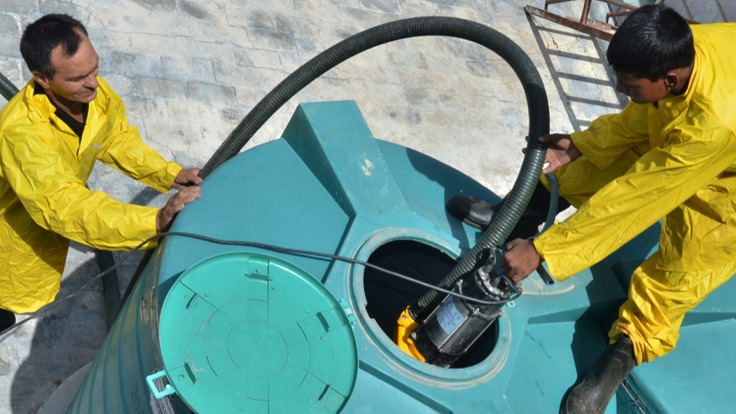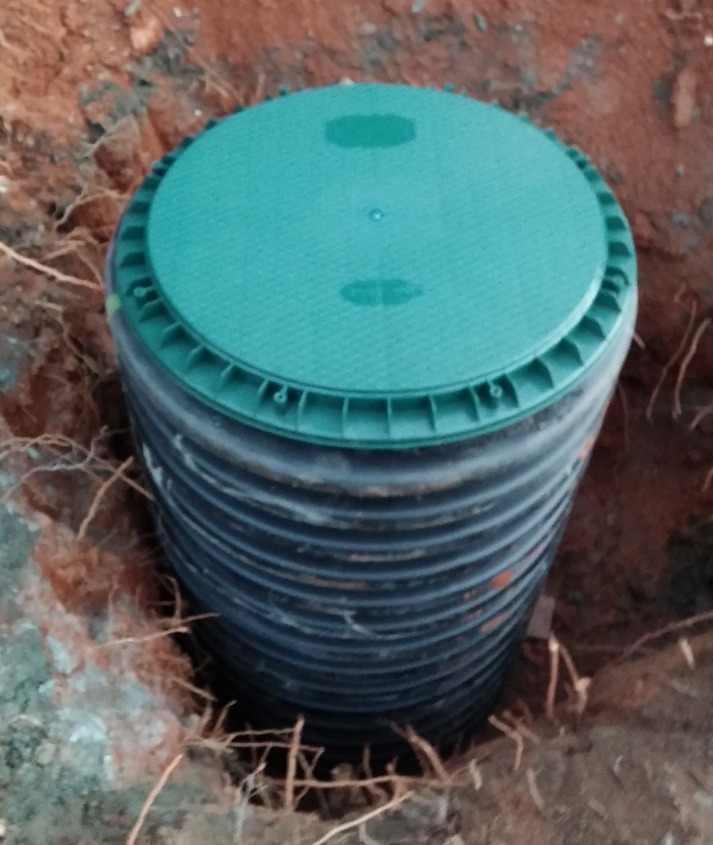The water tank needs to disinfect thoroughly by adding chlorine bleach (for a 500-liter tank, take 2 cups) in the clean water and mixing up the solution. After twenty-four hours lid is to be opened and take a read of the chlorine amount is done with a chlorine strip.
After removing all algae and sediments the next step is the water tank disinfection procedure ,use UV light or do sanitization to kill the remaining bacteria. The material of your water tank also affects your cleaning needs for example plastic tanks builds up less sediments and dirt comparing to cement tank. This does not mean plastic tank is better than cement tanks .
Always discharge water away from houses and other structures in a way that is safe and responsible. Depending on the total volume, draining may need to be done at several different times to allow the ground time to absorb the water. “They require more advanced water testing [and] more frequent cleaning, including the lid of the tank, which can collect salt deposits,” Marvel said. But don’t just dump any old water into the tank, because that can be dangerous. “If you wash it with other water, you run the risk of removing beneficial bacteria,” Marvel said. Use it along the inside of your fish’s tank to keep algae from taking over. If you’d like to learn more about aquariums, check out our in-depth interview with Marshall Stephens.
How to Clean a Dirty Fish Tank
Take the fittings out of the soaking tub and give them a light citric rinse or do this when appropriate and on your timeline. Apply all safety gear necessary to be safe while doing the tasks described.
Step 2: Drain the Rain Tank
You’ll not only want to have a designated place to drain out the water, but you also should make sure that the place your draining won’t lead to nasty water spilling somewhere you don’t want it. In addition, try to drain your tank somewhere that won’t negatively affect the environment. Turn on your water pump, open all of the taps, and let the water drain out.
QHSE practices also ensure regulatory compliance, improve productivity, and reduce downtime. Therefore, it is essential for tank cleaning companies to implement robust QHSE practices to ensure the safety of workers and the protection of the environment.
During the first few months of keeping fish, you should monitor the water conditions of the tank regularly. For rubbing alcohol solution, use two parts rubbing alcohol to one part water.
These components will accumulate in the bottom of oil tank, formed a thick and black gelatinous material layer, which is sediment of storage tank. Similarly, water tanks like fiberglass type or plastic tanks are semi-transparent. This means that they allow partial passage of sunlight which provides favourable conditions for algal growth.
If the heater has algae growth, now would be the time to remove and clean it, too. Fish waste, uneaten food, and plant debris can accumulate on the bottom of the tank and create a layer of sludge that can be harmful to the fish and cause water to turn cloudy. Also, excessive heat can cause water evaporation, which can lead to changes in the water chemistry, creates dirty water, and may go further to harm the fish. Use an aquarium-safe lime cleaner for the outside glass to ensure you have no spots, dust, fingerprints, or other smudges on the outside. However, this is not a general rule; ensure you use your test kits and personal judgment to know when your tank needs to be cleaned. These are products created to prepare tap water for use in an aquarium. Read more about septic tank pumping near me here. In case the tap water is chlorinated, a conditioner with a dechlorinating agent can be used.
When nitrate and nitrite, the byproducts of fish waste and decomposing leftover food, build up in your aquarium water, algae will bloom and your fishes’ health will suffer. Fish who are stressed by poor water quality conditions will be more susceptible to disease, and if consistently exposed to these conditions, will experience illness and shortened life spans. Remember to clean the substrate and sides of the tank regularly, try using natural methods to control algae growth, and use the right tools to clean algae. With a little effort, you can have a beautiful and healthy fish tank in no time. Algae growth is a common problem in fish tanks that can also be solved by aquatic plants.






